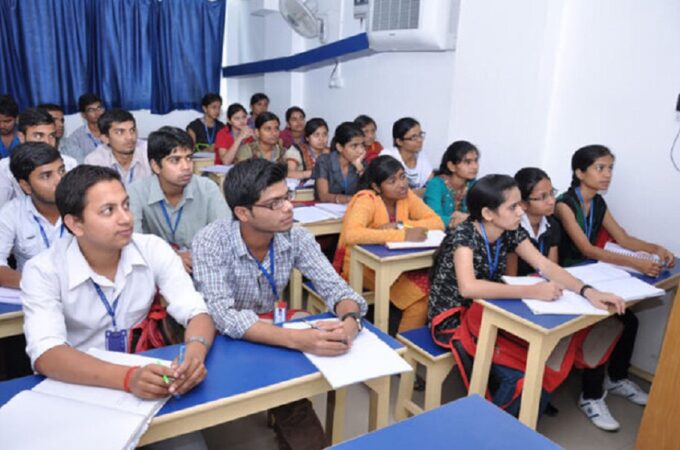
What is Guesstimate and Top Questions
Attention, data science, and business analytics enthusiasts!
Your interviews are nearer than you think. The recruiters will test your knowledge in all regards during a relevant interview before hiring you. Also, they will check the unique edge that sets you apart from the massive applicant pool. So, it’s time to buckle up, prepare well, and give your best during such screening tests.
What’s one thing that can make you stand out from the crowd in a data science or business analytics interview? It’s a sound knowledge of Guesstimate. You can build your understanding of Guesstimate and brush your concepts through a detailed questionnaire to emerge prepared in an interview.
Also, the interviewers are likely to ask various questions regarding Guesstimate to measure your hold of the domain.
We’ve got your back!
Here is a detailed resource explaining all essential questions and answers regarding Guesstimate. It’s your ultimate guide to crack such tests and get a job in your dream company.
Are you ready to explore the top Let’s dive in!
1. What do you mean by Guesstimate?
The first approximation based on the scant information given is a guesstimate. It’s not an exact answer; rather a guess based on the information available.
2. How do you approach a guesstimate question?
The four-step strategy to approach any guesstimate question is:
Step 1: Discuss unclear terms in a question to collect more details and find better answers.
Step 2: Break complex details into smaller pieces for more accurate estimation.
Step 3: Calculate each piece’s value using mathematics and background knowledge.
Step 4: Consolidate all information pieces to conclude.
3. Explain various types of Guesstimates depending on the solutions approach?
Household Approach: This method is used to answer household estimation inquiries.
Population Approach: We use the population approach to resolve population-related guesstimate questions like how many people eat something or live in a given location.
Structural Approach: This method is used to answer guesstimate queries like calculating the number of planes that land in a given day.
4. Can you give me some examples of guesstimate questions?
- In India, how many Mama Earth face packs are sold each day?
- The current number of Indian iPhone users
- How many bikes were sold in Delhi last month?
- The number of teacups consumed by Bangalore citizens last week
5. How many people in India use iPhones at present?
Let’s pretend we’re looking at all iPhone models. India has 1.39 billion inhabitants. Children and senior persons account for 40 percent of the population. It means that youngsters and the elderly will be eliminated, leaving 834 million people eligible to acquire an iPhone.
Out of all people, we’ll focus on those in the high and upper-middle classes who can afford an iPhone. We’ll leave out the lower middle class, which
accounts for about 14% of the population.
It takes our total value to 717 million people. According to data, the iPhone has a market share of 3.2 percent. It implies that there could be 22 million iPhone users in India.
6. How many refrigerators do Indian companies sell per year?
First and foremost, determine whether we will evaluate domestically produced refrigerators or refrigerators made domestically and abroad.
We’ll exclude portions based on a few criteria to evaluate both. Consider India’s population and divide it by the average number of people living in Indian households. The value is four. Now divide the population into three tiers: urban (tier 1), suburban (tier 2), and rural (tier 3). (tier 3).
Now, categorize these levels according to the availability of electricity (1.3 million Indians do not have access to electricity). Subtract the number of individuals living in poverty. The annual need for new refrigerators and replacements should be factored into your estimate. Consider the typical life of a fridge (10 years) and refrigerators’ annual predicted growth rate in your calculations.
7. How many laptops does Mumbai sell every day? Could you give me an average number?
We’ll look at the supply and demand for laptops in this section. Because the location is Mumbai, I assume that supply exceeds demand.
The ’18-45′ age bracket, which accounts for roughly 70% of Mumbai’s population, will be the suppliers’ target market. A laptop costs approximately 40,000 rupees on average, presuming that anyone earning more than this amount can afford one. This area accounts for over 70% of Mumbai’s population.
Assume that 70% of this population already possesses a laptop and that just 30% would consider purchasing one. Assume that demand for personal computers will rise by 20%, while demand for laptops will rise by 80%.
The measures mentioned above divided by the number of days equals the average number of laptops in a year.
8. How many balls should you pull out from a bag of red and green balls to get two same-colored balls?
Assume you remove a red ball first, then a green ball. After two attempts, you will receive either a red or green ball, resulting in a pair of matching balls on the third attempt.
9. How many teacups do Delhi residents consume per month?
We’ll presume fewer people will drink tea because weekends aren’t working days. The population is the following number to examine. There are 20 million inhabitants in the city, and let’s say that 20% of them aren’t tea drinkers. Thirty percent of the remaining people drink tea every day, twenty percent occasionally, and ten percent never drink tea.
Let’s suppose daily tea drinkers have three cups each day, whereas infrequent tea drinkers have two cups per week.
The total number of tea cups consumed will be
For daily tea consumers – 3 x 0.2 x 7 = 4.2
For occasional tea consumers – 1 x 0.2 x 1 = 0.2
Understandably, for non-drinkers=
Total= Daily consumers + Occasional consumers + Non-drinkers = 4.4 cups in a day
Per month = 4 x 4.4 x 1.4 crore = 24.64 crore cups.
These are some classical model guesstimate questions you can practice to build your concepts. Revise them more to sharpen your abilities. All the best!





